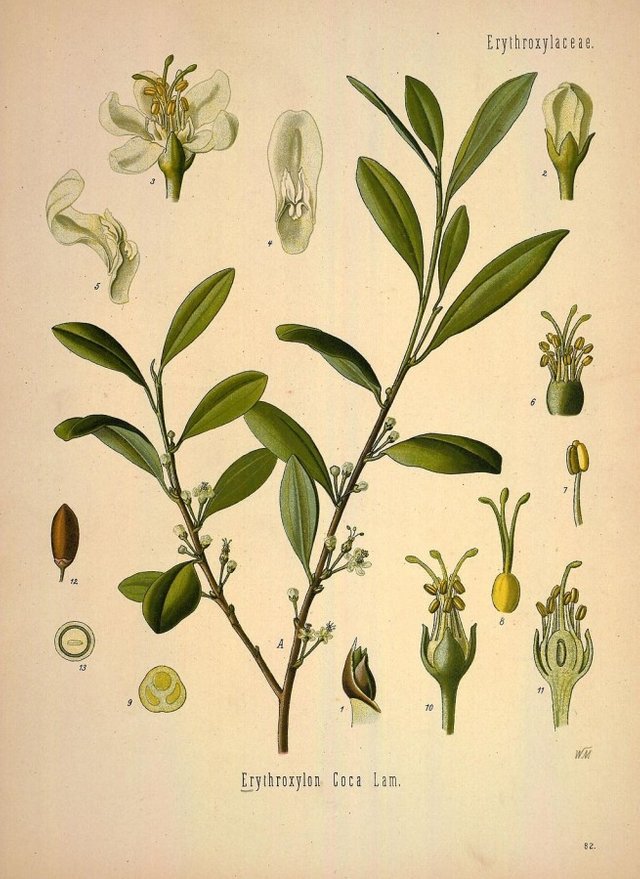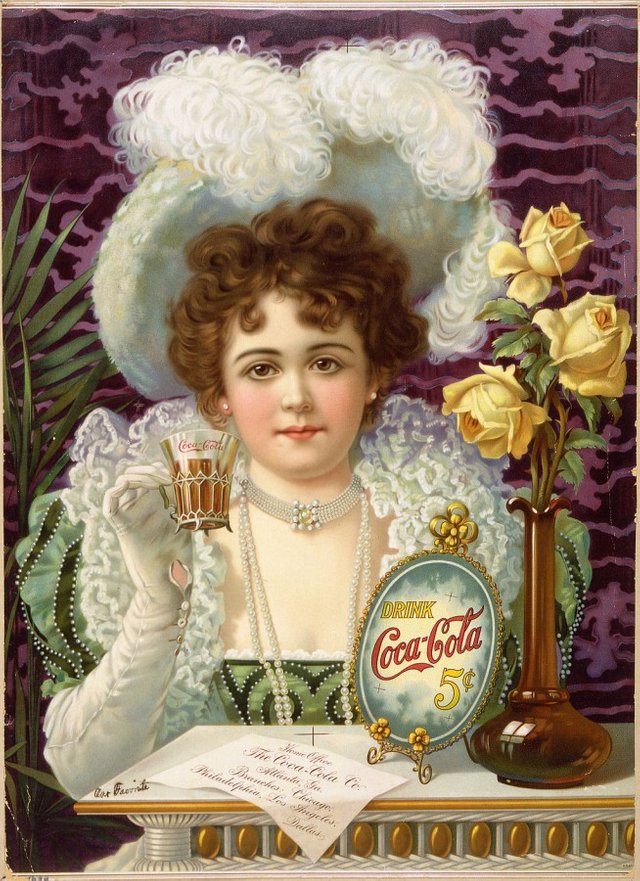In nature, cocaine works as an insecticide

Effective stimulant and Bohemian drug, a symbol of the era of decadence and the curse of several
Cocaine is an alkaloid of the plant Erythroxylum coca known as Coca Bush. Like tobacco, Coca Bush originates from South America. The Coca leaves cocaine is "working" with the insecticide, not allowing the pests to eat. Millennia Coca leaves were used by Indians as a tonic. They became permanent participants of the gala ceremonies, religious rituals, and even surgical operations. Bundles of Coca leaves found in Peru, mummies 2,000 years old.

The first pure cocaine was isolated by German chemist Friedrich Hedke in 1855, calling the obtained white powder erythroxyline. His usual name of the substance "worked" only a few years later. In 1859, another German, albert Niemann, post-graduate student of the great Friedrich Wohler received the cocaine from Coca leaves and gave it its present name.
In contact with the mucous membranes of cocaine caused a persistent numbness that quickly appreciated the surgeons are starting to use it as a local anesthetic. In 1863, after reading reports of experiments with the Coca leaf chewing, the adventurous French scientist Angelo Mariani organizes the production of wine with extract of Coca leaves. Mariani wine is gaining immense popularity, receiving rave reviews, including from Queen Victoria. Not left behind and the Pope Leo XIII. A flask of cocaine wine became the constant companion of the Pontiff, and his portrait adorns the advertising of drink.
In 1886 the provincial American pharmacist John Pemberton begins selling drink containing three parts Coca leaves and one part caffeine-rich Kola nuts, "nervous system disorders". Soon his invention would become known to the world as Coca-Cola.

An ardent supporter of cocaine was Sigmund Freud, a student of the great Jean-Martin Charcot. In 1884, the future father of psychoanalysis published an article in which passionately argued the usefulness and safety of the use of cocaine in medicine. Freud strongly recommended cocaine to his patients and even his wife. Sincere belief in the benefits of the drug, turned to his years of addiction. His article played a significant role in the rampant spread of cocaine use among the intelligentsia and Bohemians at the turn of the century. At the same time Freud was one of the instigators of the use of cocaine in ophthalmology as a local anaesthetic.
The awareness of the dangers of cocaine came only in the early XX century. In 1906, the cocaine is excluded from the composition of Coca-Cola, and in 1922 he finally outlawed in the USA.
Despite the fact that in 1963 the cocaine in the decision of the UN was registered in the international list of prohibited substances, its "popularity" virtually dried up. In spite of all the efforts of the security services and exhortations doctors, this white powder as a hundred years ago, still remains an object of passionate human desires and ruining hundreds of thousands of people and drug trafficking is more than three trillion dollars in the last dozen years.